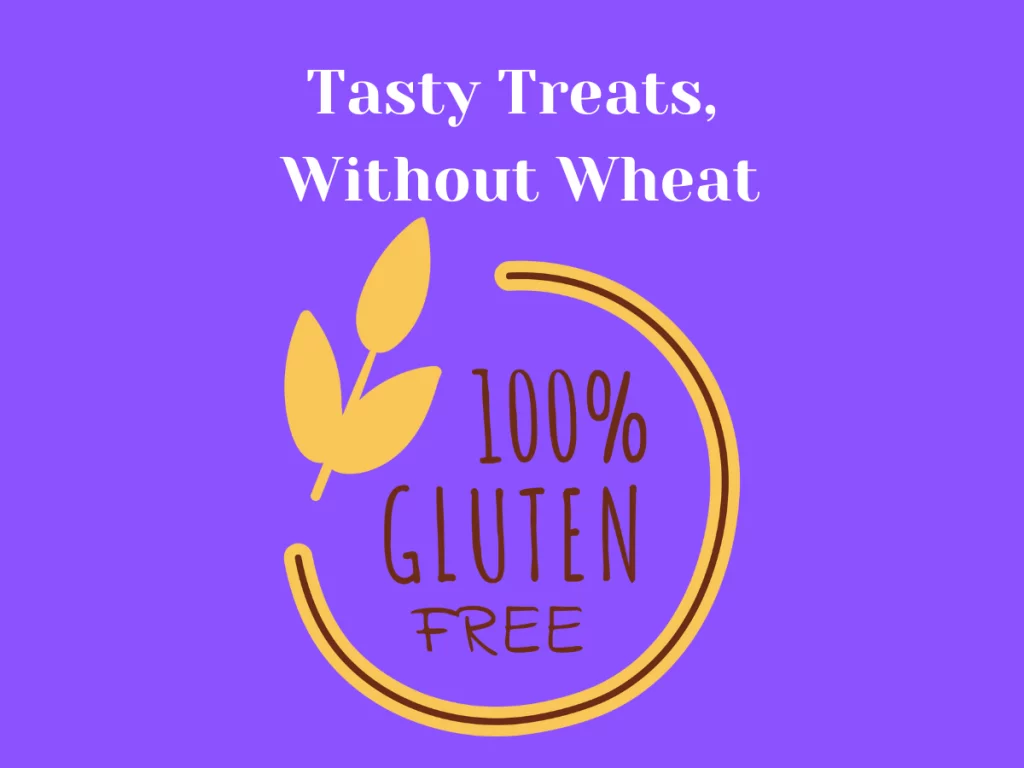Do you feel left out when it comes to enjoying baked treats? Many people with dietary restrictions or lifestyle choices often miss out on the joy of sharing delicious baked goods with friends and family. It can be frustrating to attend gatherings where you can’t eat anything on the dessert table, or to watch others indulge while you’re stuck with bland alternatives.
Imagine the disappointment of not being able to taste that mouth-watering cake at a birthday party, or the sadness of missing out on holiday cookies because they contain ingredients you can’t eat. This exclusion can make you feel isolated and disconnected from special moments and celebrations. It’s not just about the food – it’s about being part of the experience and sharing in the happiness that comes with it.
But what if you could enjoy tasty baked treats regardless of your dietary needs? This blog post is here to show you how! We’ll explore a world of inclusive baking, with recipes that cater to various diets and lifestyles. From gluten-free goodies to vegan delights, we’ve got something for everyone. Get ready to discover how you can create and enjoy delicious baked goods that everyone can share, no matter their dietary restrictions.
Table of Contents
Gluten-Free Goodies: Tasty Treats Without Wheat

Gluten-free baking opens up a world of possibilities for those avoiding wheat, but it does come with its challenges. The lack of gluten can make baked goods crumbly, so using xanthan gum or guar gum is essential to provide structure and elasticity. A blend of flours like sorghum, tapioca, and almond flour can create softer textures, while gluten-free oats or polenta add moisture and flavor to cakes and muffins. For example, a lemon polenta cake is a popular option that combines zesty citrus with a moist, grainy texture 1,3.
Experimenting with recipes is key to finding the perfect balance. Flourless options like brownies or almond cakes are naturally gluten-free and easy to make. Substituting traditional flour with ground nuts or gluten-free blends works well in dense recipes like traybakes or biscuits. For lighter bakes, adding extra vanilla or spices can enhance the flavor since some gluten-free flours have unique tastes 1,5. Recipes like gluten-free banana bread or mixed berry crumble are great examples of how to create delicious treats without compromising on taste 3.
Presentation matters too! Serve flourless chocolate cakes or gluten-free scones with toppings like whipped cream or fresh fruit to elevate the experience. With the right ingredients and techniques, gluten-free baking can be just as satisfying as traditional methods. Whether you’re baking for yourself or others, these goodies ensure no one feels left out at the dessert table 7.
Dairy-Free Delights: Creamy Desserts for All

Dairy-free baking allows everyone to enjoy creamy desserts without using milk or butter. Plant-based alternatives like coconut milk, almond milk, or oat milk are excellent substitutes for traditional dairy. These options not only mimic the creamy texture but also add unique flavors to your bakes. For instance, coconut milk is perfect for making dairy-free cheesecakes or custards, while oat milk works well in cakes and muffins 2,4.
Replacing butter in recipes is simple with options like coconut oil, vegan margarine, or fruit purees such as applesauce. These substitutes maintain moisture and richness in desserts like brownies or cookies. For example, applesauce can replace butter in recipes while adding natural sweetness and a soft texture. Coconut oil is another versatile ingredient that works well in pie crusts and frostings 2,6.
Dairy-free baking doesn’t mean sacrificing indulgence. Recipes like chocolate avocado mousse or dairy-free ice cream prove that creamy desserts can still be rich and satisfying. Experimenting with non-dairy ingredients opens up endless possibilities for creating treats that everyone can enjoy, regardless of dietary restrictions 2,4.
Vegan Victories: Baking Without Eggs or Dairy
Vegan baking eliminates eggs and dairy while still delivering delicious results. Substitutes like flaxseed meal mixed with water (a “flax egg”) or mashed bananas work well as egg replacements in cakes and cookies. These options provide binding and moisture while keeping your bakes light and fluffy. For richer desserts, aquafaba (the liquid from canned chickpeas) can be whipped into meringues or used as an egg substitute in brownies 2,,6.
Plant-based milks such as soy, almond, or oat milk are great alternatives to dairy milk in vegan recipes. Coconut cream adds richness to frostings and mousses, while vegan butter substitutes work perfectly in pie crusts and pastries. Combining these ingredients ensures that vegan treats have the same indulgent flavors and textures as traditional baked goods 2,4.
Vegan baking also encourages creativity with flavors and ingredients. From decadent chocolate cakes made with avocado to fruit-filled galettes using coconut oil pastry, there’s no shortage of options for satisfying your sweet tooth. By embracing plant-based alternatives, you can create desserts that are not only delicious but also inclusive for everyone at the table 6,8.
Nut-Free Nibbles: Safe and Scrumptious Snacks
Nut-free baking is essential for those with allergies, but it doesn’t mean compromising on flavor or texture. Plant-based proteins, such as sunflower or pumpkin seeds, can replace nuts in recipes to provide a similar crunch and nutritional value. For example, sunflower seed butter works well as a substitute for peanut butter in cookies or bars, offering a creamy texture without the allergen risk 5,7.
When replacing nuts in baked goods, ingredients like crushed pretzels or toasted oats can mimic the crunch of nuts in recipes like granola bars or pie crusts. Coconut flakes are another excellent alternative, especially in desserts like macaroons or layered cakes. These substitutes ensure that nut-free treats remain delicious and satisfying for all 5,7.
It’s also important to carefully read ingredient labels to avoid hidden nut traces in processed foods. Using dedicated nut-free facilities or certified nut-free products can help prevent cross-contamination. With thoughtful substitutions and attention to detail, it’s easy to create safe and scrumptious nut-free snacks that everyone can enjoy 7.
Sugar-Smart Sweets: Cutting Back Without Losing Flavor
Reducing sugar in baked goods is a growing trend, but it requires careful adjustments to maintain taste and texture. One popular approach is replacing sugar with natural sweeteners like stevia or polyols such as erythritol. Studies show these alternatives can reduce sugar content while preserving sweetness and structure in cakes and muffins 1,4,9.
Another strategy is incorporating fruit purées like applesauce or mashed bananas into recipes. These add natural sweetness while also enhancing moisture in baked goods such as brownies or muffins 6,9. Additionally, using spices like cinnamon or vanilla can enhance the perception of sweetness without adding more sugar 4,9.
However, reducing sugar can impact browning, shelf life, and crumb structure. Techniques like refrigerating dough to improve browning or adding fiber-rich ingredients like chicory root can help counter these effects. With the right adjustments, it’s possible to create sugar-smart sweets that are both healthier and delicious 6,9.
Allergy-Friendly Alternatives: Simple Swaps for Common Ingredients
Baking for people with allergies requires creative ingredient swaps to ensure safety without sacrificing quality. For dairy-free recipes, plant-based milks like oat or almond milk are excellent substitutes for cow’s milk. Coconut oil or vegan margarine works well in place of butter to maintain richness in cookies and cakes 3,5,7.
Egg replacements include flaxseed meal mixed with water (a “flax egg”) or aquafaba (chickpea water), which mimic the binding properties of eggs in recipes like brownies or meringues. For gluten-free baking, blends of rice flour, tapioca starch, and xanthan gum create a structure similar to wheat flour 3,8.
Cross-contamination is a critical concern when baking for allergies. Always use dedicated tools and ingredients certified allergen-free. With thoughtful substitutions and attention to preparation methods, allergy-friendly baking ensures everyone at the table can safely enjoy delicious treats 3,7.
Baking for Everyone: Bringing People Together Through Food
Inclusive baking is about making sure everyone can enjoy delicious treats, no matter their dietary needs. It’s a way to show care and bring people together through food. By using alternative ingredients and considering different diets, we can create baked goods that everyone can share. This approach goes beyond just following recipes – it’s about making people feel welcome and included. Whether you’re baking for someone with allergies, dietary restrictions, or specific health needs, there are many ways to adapt recipes. From gluten-free flour to vegan butter substitutes, the options are endless. It’s not just about the food, but about the joy of sharing and connecting with others through baking 1.
Tips and Tricks for Successful Inclusive Baking
To make inclusive baking easier, start by planning ahead. Read recipes carefully and have all ingredients ready before you begin. Use fresh, room-temperature ingredients for the best results 3. When baking for those with sensory sensitivities, consider using ingredients with appealing textures and smells 2. For allergy-friendly baking, always check labels and use dedicated tools to avoid cross-contamination. Experiment with alternative ingredients like applesauce for eggs or plant-based milk for dairy 5. Don’t be afraid to adjust recipes – baking is part science, part art. Use a digital scale for accurate measurements, especially when working with gluten-free flours 3. Remember, practice makes perfect. Start with simple recipes and work your way up to more complex ones. Most importantly, have fun and be patient. Inclusive baking is about creating joy for everyone, so enjoy the process 1,2.
Conclusion
Now you’re ready to start creating delicious, inclusive treats for everyone to enjoy! Remember that baking is a journey, so don’t be afraid to experiment with different ingredients and techniques to find what works best for you. The most important thing is to have fun and spread joy through the act of baking.
If you need more guidance or have any questions along the way, please feel free to reach out to me at info@ayoogidan.com. I would love to help you on your inclusive baking journey.
Frequently Asked Questions:
Q: What is inclusive baking?
A: Inclusive baking means creating treats that everyone can enjoy, regardless of their dietary needs or restrictions.
Q: How can I make gluten-free baked goods less crumbly?
A: Use xanthan gum or guar gum to provide structure and elasticity, and blend gluten-free flours like sorghum, tapioca, and almond flour.
Q: What can I use instead of dairy milk in baking?
A: Plant-based milks like coconut milk, almond milk, or oat milk are excellent dairy-free substitutes.
Q: How can I replace butter in dairy-free recipes?
A: Use coconut oil, vegan margarine, or fruit purees like applesauce as substitutes for butter.
Q: What can I use instead of eggs in vegan baking?
A: Use flaxseed meal mixed with water (a “flax egg”), mashed bananas, or aquafaba as egg replacements.
Q: How can I ensure my nut-free treats are safe for those with allergies?
A: Use nut-free alternatives like sunflower seed butter, crushed pretzels, or toasted oats, and always check ingredient labels carefully.
Q: How can I reduce sugar in baked goods without sacrificing flavor?
A: Use natural sweeteners like stevia or fruit purees like applesauce, and enhance flavors with spices like cinnamon or vanilla.
Q: What are some common allergy-friendly alternatives for baking?
A: Use plant-based milks for dairy, flax eggs for eggs, and blends of rice flour, tapioca starch, and xanthan gum for wheat.
Q: What is cross-contamination and how can I avoid it?
A: Cross-contamination is when allergens accidentally mix into allergen-free foods. To avoid it, use dedicated tools and ingredients certified allergen-free.
Q: What’s the most important thing to remember when baking inclusively?
A: The most important thing is to have fun, be patient, and focus on creating joy for everyone through your baking.